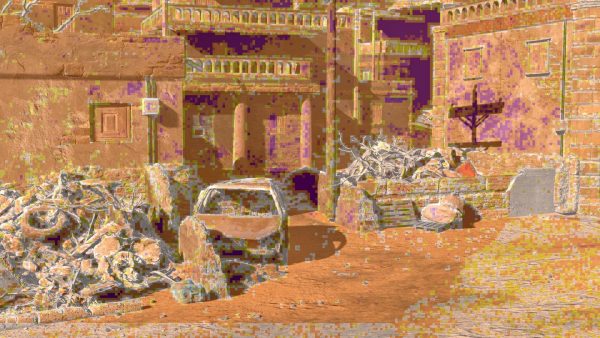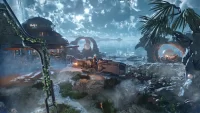(Auszug aus der Pressemitteilung)

Beyond its role as a benchmark, 3DMark is also a showcase for the latest advances in real-time graphics.
Gamers can see new visual effects and techniques in 3DMark long before they become common in mainstream games.
We started this year with 3DMark Port Royal and the NVIDIA DLSS feature test, which show real-time ray tracing in action. In June, we added the PCI Express feature test to show the potential of PCIe 4.0. And more recently, we added the VRS feature test to help gamers see the benefits of Variable Rate-Shading.
Today, we’re adding a new option to use a more versatile and sophisticated form of Variable-Rate Shading in the VRS feature test.
What is Variable-Rate Shading?
Variable-Rate Shading (VRS) is a new DirectX 12 feature that lets game developers improve performance by selectively reducing the level of detail in parts of the frame where it’s unlikely to be noticed.
Shading rate refers to the number of pixel shader operations called for each pixel. Higher shading rates improve accuracy but are more demanding for the GPU. Lower shading rates improve performance at the cost of visual fidelity.
With Variable-Rate Shading, a single pixel shader operation can be applied to a block of pixels, for example shading a 4×4 block of pixels with one operation rather than 16 separate operations.
By applying the technique carefully, VRS can deliver a big performance boost with little impact on visual quality. With VRS, games can run at higher frame rates, in a higher resolution, or with higher quality settings.
3DMark VRS feature test adds Tier 2 support
3DMark feature tests are special tests designed to highlight specific techniques, functions or capabilities. The 3DMark VRS feature test is designed to help you compare differences in performance and image quality when using Variable-Rate Shading.
There are two tiers of VRS support in DirectX. With Tier 1, developers can specify a different shading rate for each draw call. Tier 2 adds more flexibility and control by allowing different shading rates within each draw call.
In 3DMark’s new Tier 2 test, lower shading rates are used in areas where there is less contrast between neighboring pixels, for example, areas in shadow or with fewer details.
The 3DMark VRS feature test runs in two passes. VRS is disabled on the first pass of the test to provide a baseline for comparison. Variable-Rate Shading is enabled for the second pass. The test then reports the average frame rate for each pass and calculates the performance gained with VRS.
Explore VRS performance in real-time
The VRS feature test also offers an interactive mode that lets you change Variable-Rate Shading settings on the fly to see how they affect the frame rate and image quality. A handy visualizer option—used to create the screenshot below—shows you where each shading rate is used.
3DMark VRS feature test screenshot using the Interactive mode visualizer to see where different shading rates are applied.
- White = 1×1
- Yellow = 1×2 or 2×1
- Orange = 2×2
- Pink = 2×4 or 4×2
- Purple = 4×4
Compatibility
You need Windows 10 version 1903 or later and a DirectX 12 GPU that supports Variable-Rate Shading to run the 3DMark VRS feature test. Tier 1 VRS is supported by NVIDIA Turing-based GPUs and Intel Ice Lake CPUs. Tier 2 VRS is currently only available on NVIDIA Turing-based GPUs.
3DMark Advanced Edition
The VRS feature test is available now as a free update for 3DMark Advanced Edition. 3DMark is available from Steam and the UL benchmarks website.
3DMark Professional Edition
The VRS feature test is available as a free update for 3DMark Professional Edition customers with a valid annual license. Customers with an older, perpetual Professional Edition license will need to purchase an annual license to unlock the new test.




Neueste Kommentare
5. November 2025
5. November 2025
3. November 2025
1. November 2025
1. November 2025
1. November 2025